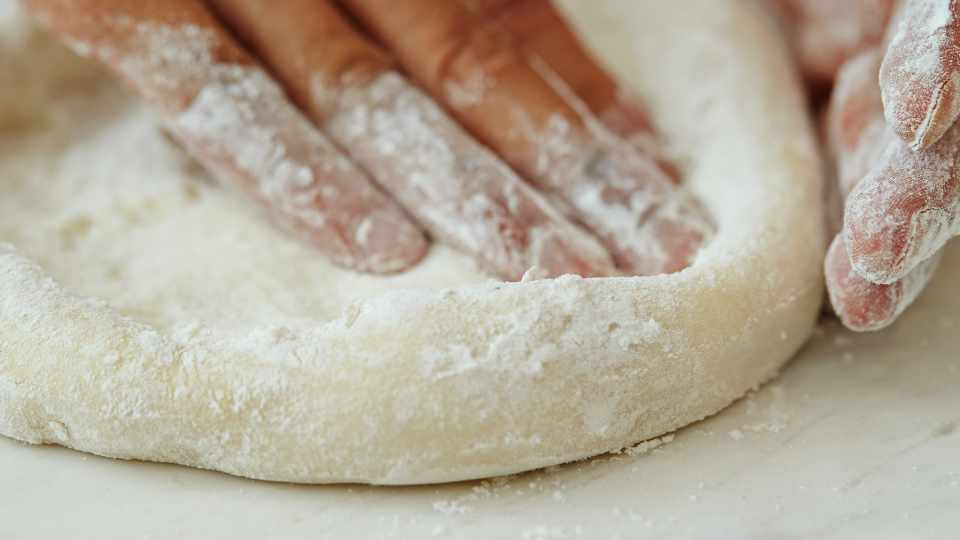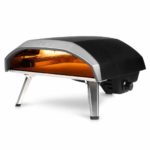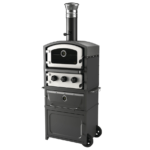Why Is My Pizza Dough Not Rising? (Reasons & Solutions)
Are you having trouble getting your pizza dough to rise? It can be a frustrating experience, but with the right know-how, you can troubleshoot the underlying issue and get your dough back on track.
In this blog post, we will cover some of the common reasons why pizza dough isn’t rising, as well as offer helpful tips on how to fix it quickly!
Now let’s dive into all the juicy details about making sure that every batch of homemade pizza comes out perfectly risen.
Why Is My Pizza Dough Not Rising?
In short, the most common reasons for your pizza dough not rising are incorrect use of yeast, improper water temperatures, inadequate rising time and over-kneading the dough.
Inactive Yeast
One of the key elements for successful dough rising is active yeast.
Yeast needs to be activated and ready to properly ferment the flour in order for it to rise. When using dry yeast, it is important that you check the expiration date as expired and old yeast won’t work efficiently or produce a sufficient amount of gas needed for pizza dough rise.
To ensure a proper fermentation process with desired outcome make sure you always use the freshest possible ingredients such as quality active dry yeast, and avoid over-kneading the dough are all important points when making pizza.
Improper Water Temperature
When mixing the dough, water temperature plays an important role in making a perfect pizza crust. Yeast activity is dependent on the optimal water temperature which should be between 105 and 115 degrees Fahrenheit (41- 46 degree Celsius).
Too hot and it can kill the yeast; too cold and it won’t activate properly. Hot water speeds up the fermentation of the dough, thus aiding rising power. However, if it’s too hot, sugar molecules will break down leading to a lack of seasoning from sugar release as well as killing yeast cells before they are fully activated.
Using warm tap water or heated liquid is one way to ensure that the correct temperature is reached but this can result in overshot temperatures especially when forgotten at times while preparing other components of your pizza recipe.
Household thermometers provide an accurate measure for this temperature range plus such options as instant read digital thermometers also exist to accurately control the heat level of liquids prior to their addition to your dough mix.
Not Enough Time For Rising

Allowing enough time for rising is crucial if you want your pizza dough to have the right texture and flavour. Yeast plays an integral role in dough rising, causing it to rise by activating its fermenting enzymes.
This fermentation process allows carbon dioxide to form air bubbles within the dough which gives it a fluffy and light texture when cooked. If not given enough time for this reaction to take place, the resulting pizza may be flat or dense instead of having that desired pillow-like softness.
To ensure adequate time for rising, look at timing instructions on yeast packages as some require more than others due to their activity level. While refrigeration can help store dry yeast over longer periods of time, keeping fresh yeast tucked away at room temperature helps keep them active and ready when needed.
Over Kneading
Too much kneading of your pizza dough can lead to the bread not rising properly or at all.
This is because over-kneading reduces the gluten structure in your dough. Gluten helps trap CO2, produced by yeast as it digests sugar, which then causes carbon dioxide bubbles and provides a lift for your pizza crust during baking.
Tips for avoiding over-kneading include using just enough flour so that the dough has some slight tackiness but is still workable; actively checking for proper starch hydration levels when mixing water into the dough; and using a kitchen timer to ensure accuracy when kneading by hand or machine.
Troubleshooting Tips For Pizza Dough That Isn’t Rising
Check Yeast Freshness And Activity
When making pizza dough, one of the most important steps is to ensure that the yeast you are using is fresh and active. Expired or improperly stored yeast can be the cause of your pizzas not rising properly.
To test whether your yeast is still active, simply add a teaspoonful of sugar to some warm water (between 98-100°F/37-38°C), then mix in a small portion of your dry non-instant yeast.
Let it stand for 10 minutes: if it begins foaming, then you will know that the yeast is alive and ready to use in baking. You should also notice a slight scent similar to beer as well – this indicates fermentation and further confirms that your yeast is indeed active.
Adjust Water Temperature
Adjusting the temperature of water for pizza dough is essential for getting it to rise properly. Yeast activity is directly affected by temperature, with higher temperatures speeding up its activity and lower temps slowing it down.
The ideal range of water temperature lies between 105°F – 115°F (40–46°Celsius); if the water is too hot, the yeast will die off and not be activated properly, leading to a flat dough that doesn’t rise.
To ensure optimal levels of yeast activation while making pizza dough at home, use an instant-read thermometer to check that your waterfalls within this desired range.
If you’re having trouble keeping your kitchen cool enough so as not to go above 115 F – consider using ice cubes in combination with warm tap/bottled water – In other words create a ‘tempering’ process: slowly introducing how much heat needed in order for effects on yeast cells occur around 105–115°Fahrenheit (40–46°Celsius).
Allow Enough Time For Rising
Proofing is an important step when it comes to making pizza dough and is part of the process where you let your dough rise. This step allows for perfect flavour, airiness, and structure that will make your pizzas so delicious.
Proofing plays a crucial role in how well-hydrated the dough is since this helps give it its strength and elasticity.
When preparing your dough for proofing, you need to keep an eye on both water temperature as well as room temperature or proving box temperature if using one. For best results with yeast-activated pies use warm water (110° F) while with sourdough specimens cold water should be preferable.
As long as temperatures range between 70–80°F, depending on the type of yeast used, you can expect good rising action within 8 hours.
Avoid Over Kneading The Dough
Kneading pizza dough is an essential step in creating the perfect crust, but it’s possible to over-knead the dough if you’re not careful. Over-kneading results in a tough texture– completely different from the light and airy crust you’d expect with pizza.
This can occur when too much handling or folding of dough takes place− resulting in gluten bonds that go beyond what’s necessary for structure and support.
Taking breaks while kneading your pizza dough helps reduce the chances of overworking it.
Conclusion
While many components factor into the success of pizza dough rising, each issue should be identified and remedied in order to achieve a successful rise.
The key takeaways are: check yeast freshness and activity, adjust the water temperature as needed, and allow enough time for rising while avoiding over-kneading of the dough.
If all else fails, adding new yeast directly to the failed dough may help save it from potential disaster.






